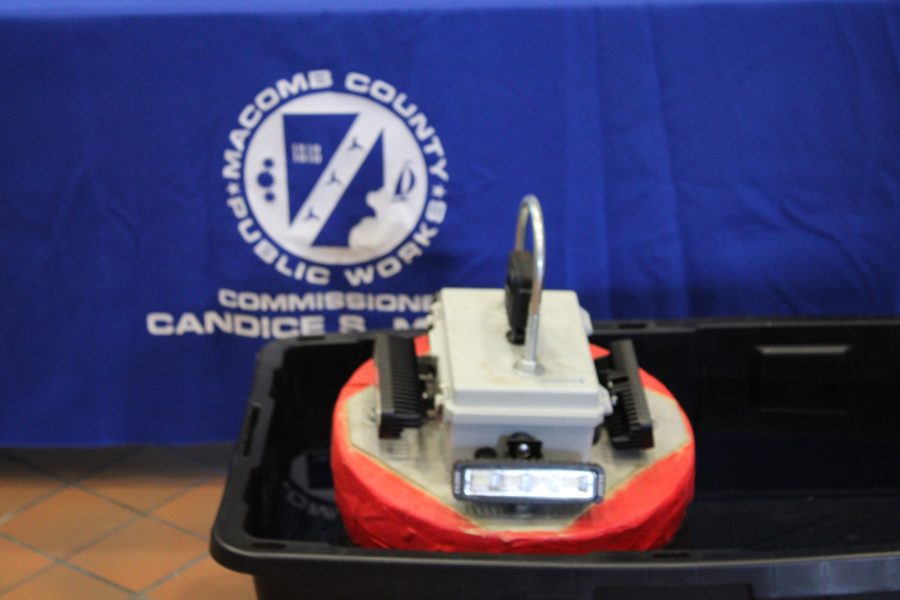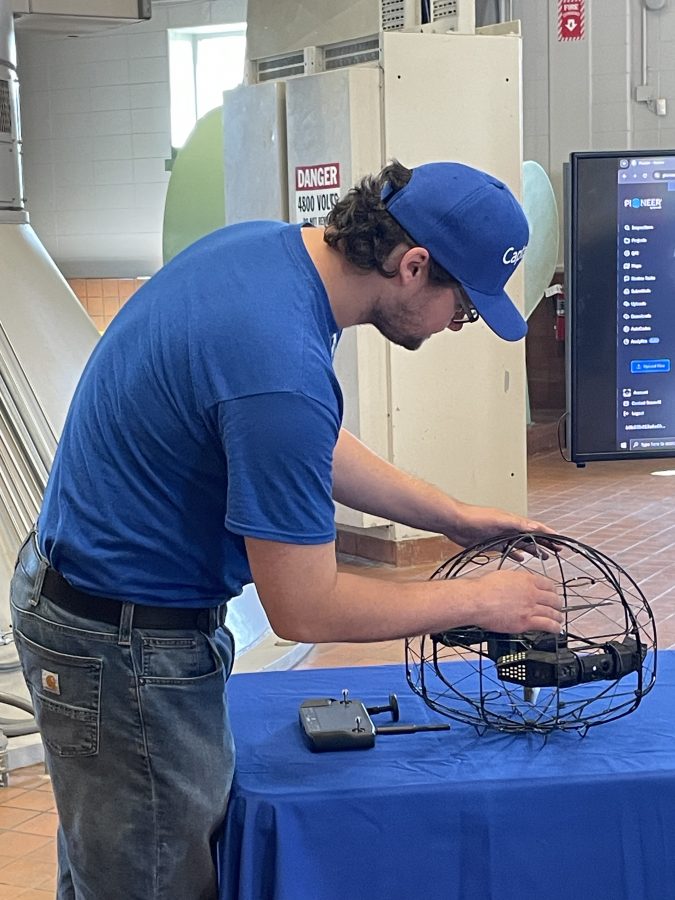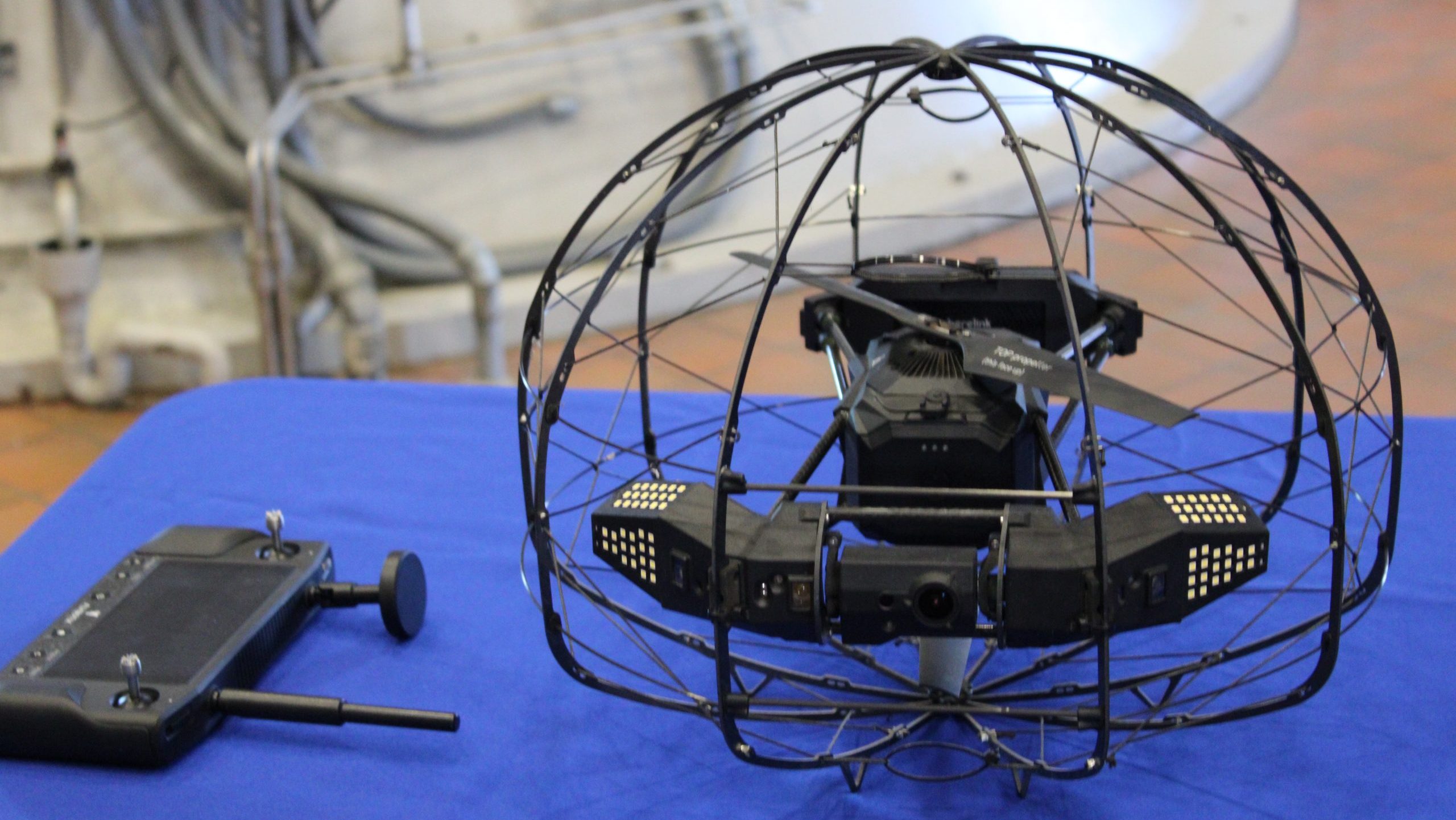The Macomb County Public Works purchased a $100,000 FlyBotix drone and SewerAI artificial intelligence software package to assess sanitary pipes in the county.
The release of the product was announced on Monday at the Chapaton Pump Station in St. Clair Shores.
Macomb County Public Works Commissioner Candice S. Miller says the county is the first in the state to use this technology.
“We’re already saying just in the last two months, we probably saved $4 million for less than $100,000. So we may be the first one in the state to do this, but I will make a prediction that by the end of the year, others are going to be following here,” she says.
The splash-proof drone, which is surrounded by a cage, can be flown up to 1,000 feet into pipes up to 12 feet in diameter.
The Public Works team also built a device called Go Flow, which uses a GoPro on top of a buoy to gather data from pipes with a lot of water.

Miller says the drone and Go Flow will reduce cost and time to gather data to make infrastructure improvements. The drone and software package will help reduce the time and manpower required to do the job, from months to days.
Macomb County Public Works Operations & Flow Manager Vincent Astorino says the county spent $1 million every three years doing similar work to inspect all the pipes.
“Every three years we’re inspecting about 150,000 linear feet of pipe, that’s a lot of data for someone to go through, try to manually go through [to] figure out what’s going on and come up with a program. So this has sped that up drastically,” he said.

Astorino says the department can now assess thousands of linear feet of pipe in one day with the new technology.
The Public Works office is creating an assessment plan by building a database from inspections in 2017, 2020, 2023 of over 400,000 linear feet of pipe and 650 manholes.
The announcement was made with a demonstration of the drone.
Astorino says the new software reduces the time it takes to make corrections.
“So the out in the field, while they’re getting video and getting all that information, they would go through that coding process and get us footage. And sometimes it would be months before we saw a pipe that was inspected,” he said. “Now we’re going on the field, we get the footage, we turn it, turn it over SewerAI, we have a 10-day maximum turnaround time with them.”
Astorino says a majority of the time the data is turned around in 24 hours and corrected within a 10-day window, compared to months to gather the data and correct the structural issues.
The drone has a 24-minute flight time going from one manhole to another. At the time, the county only has one drone and five batteries.
Trusted, accurate, up-to-date.
WDET strives to make our journalism accessible to everyone. As a public media institution, we maintain our journalistic integrity through independent support from readers like you. If you value WDET as your source of news, music and conversation, please make a gift today.

